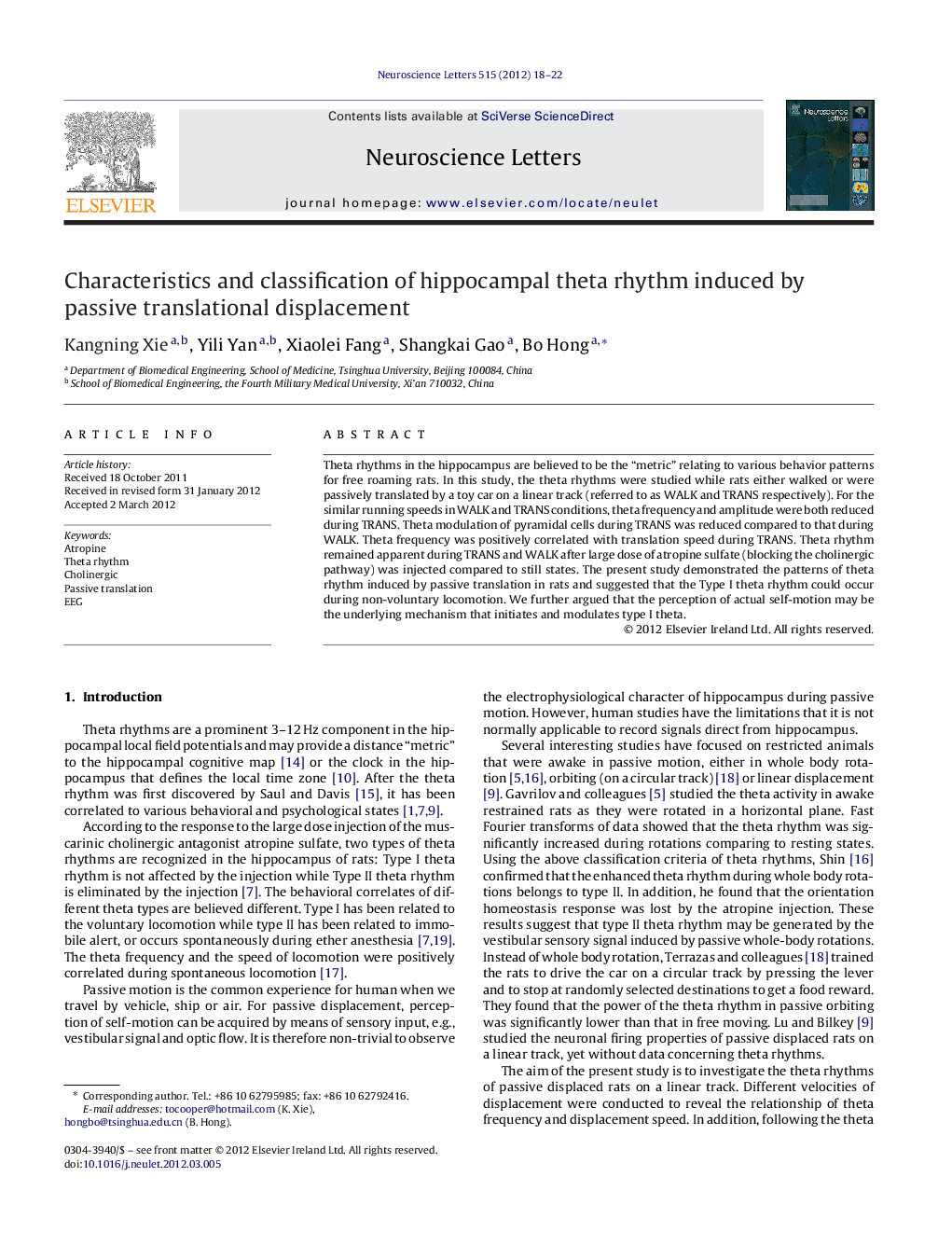| Article ID | Journal | Published Year | Pages | File Type |
|---|---|---|---|---|
| 4344642 | Neuroscience Letters | 2012 | 5 Pages |
Theta rhythms in the hippocampus are believed to be the “metric” relating to various behavior patterns for free roaming rats. In this study, the theta rhythms were studied while rats either walked or were passively translated by a toy car on a linear track (referred to as WALK and TRANS respectively). For the similar running speeds in WALK and TRANS conditions, theta frequency and amplitude were both reduced during TRANS. Theta modulation of pyramidal cells during TRANS was reduced compared to that during WALK. Theta frequency was positively correlated with translation speed during TRANS. Theta rhythm remained apparent during TRANS and WALK after large dose of atropine sulfate (blocking the cholinergic pathway) was injected compared to still states. The present study demonstrated the patterns of theta rhythm induced by passive translation in rats and suggested that the Type I theta rhythm could occur during non-voluntary locomotion. We further argued that the perception of actual self-motion may be the underlying mechanism that initiates and modulates type I theta.
► Hippocampal theta rhythms are studied in rats being passively translated on a linear track. ► Theta frequency and amplitude are both reduced during passive translation compared to walking. ► Theta frequency is positively correlated with translation speed. ► Theta rhythm is not abolished by injection of large dose of atropine sulfate, suggesting Type I. ► Our data provide an alternative explanation of the role of Type I theta.
